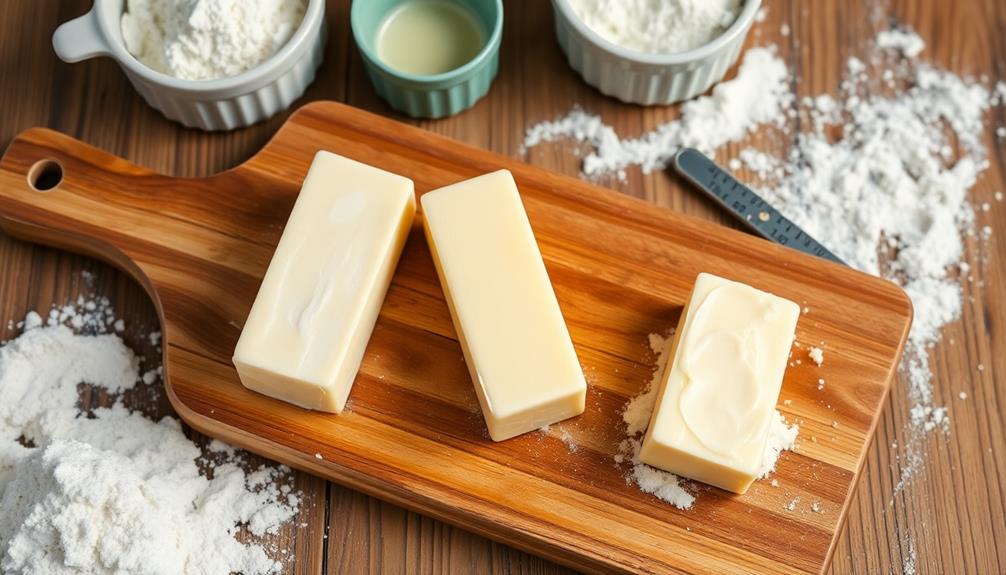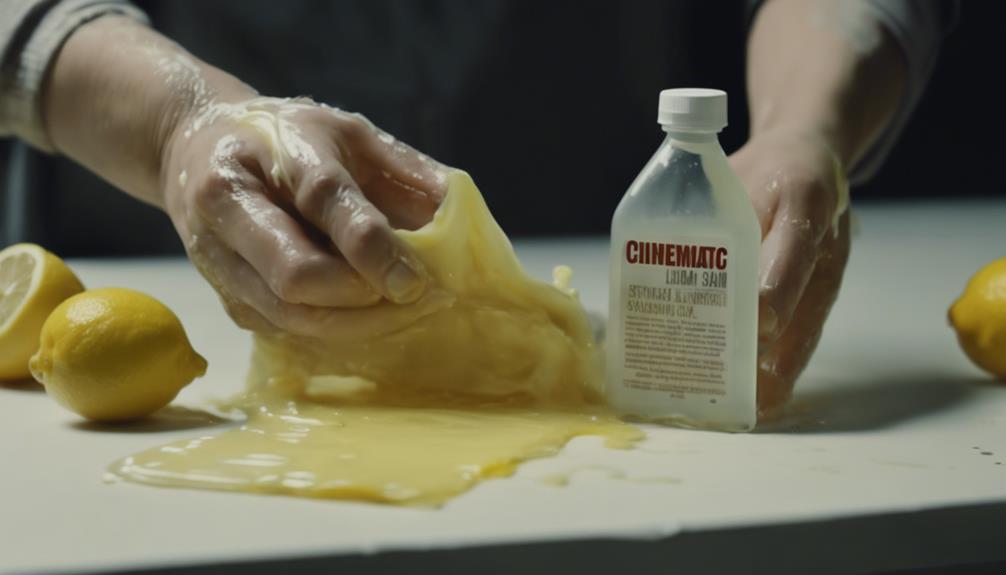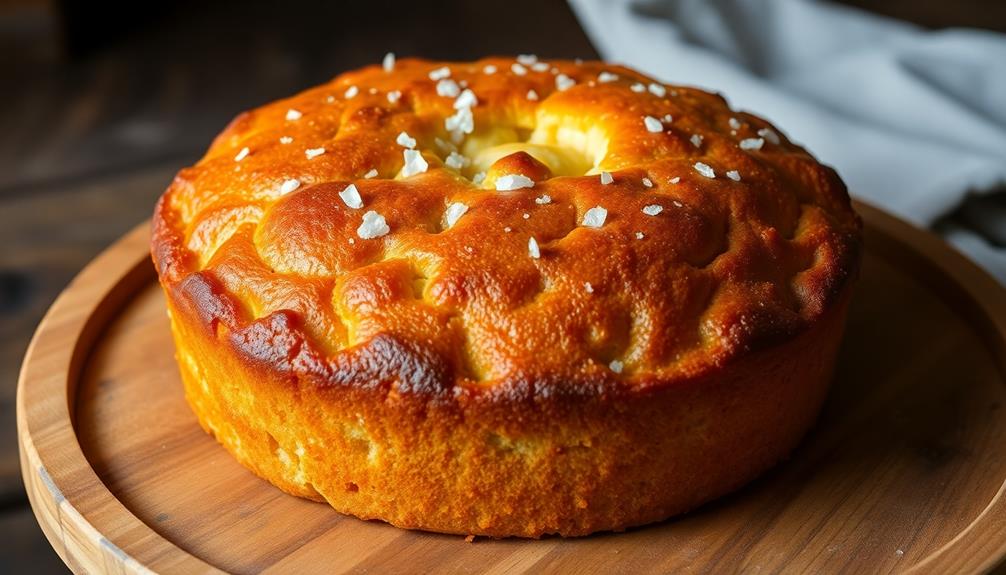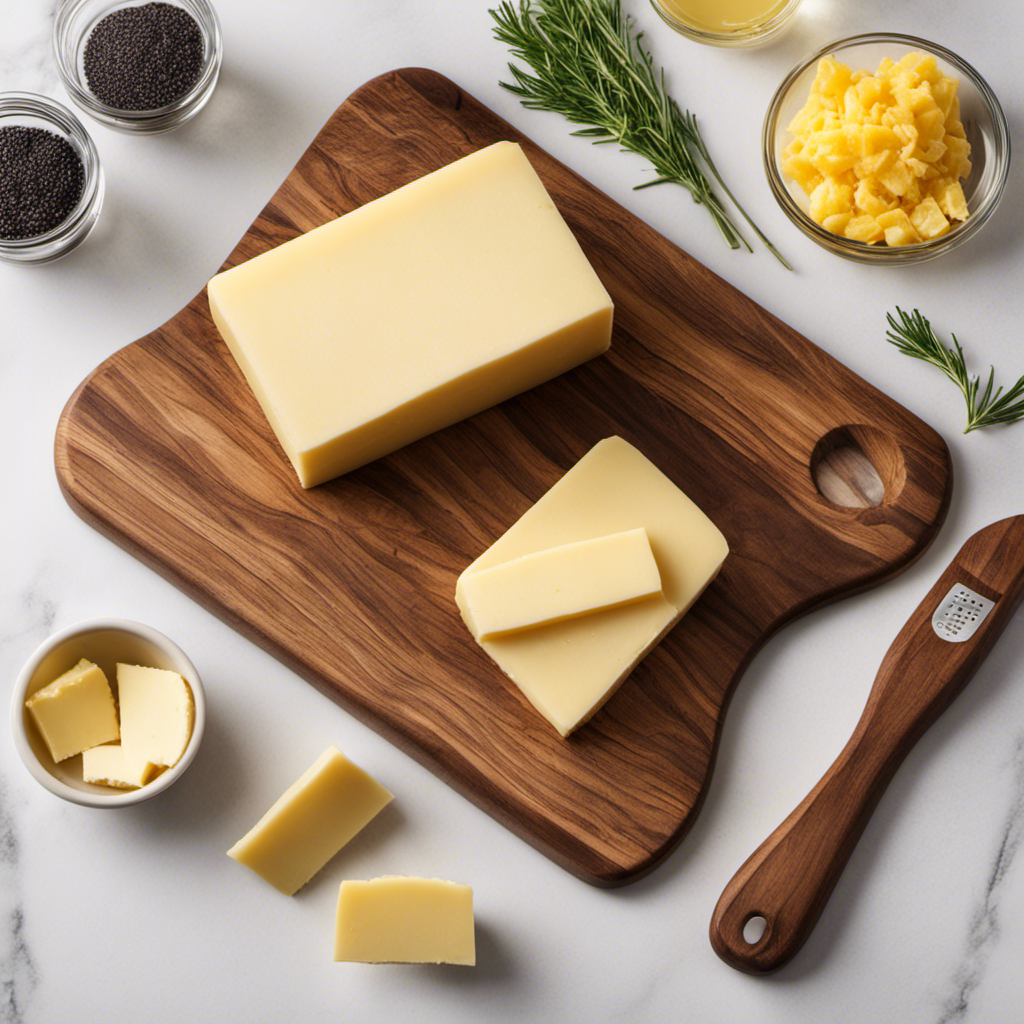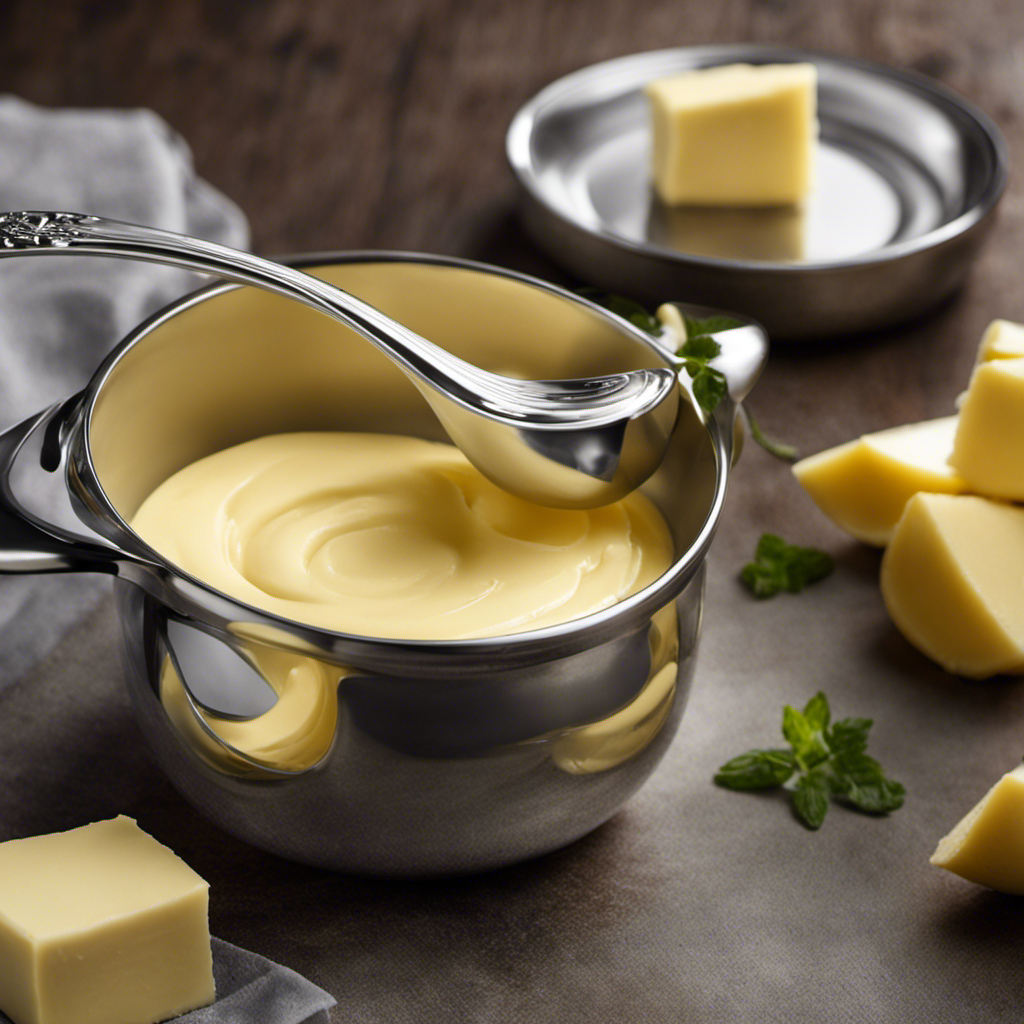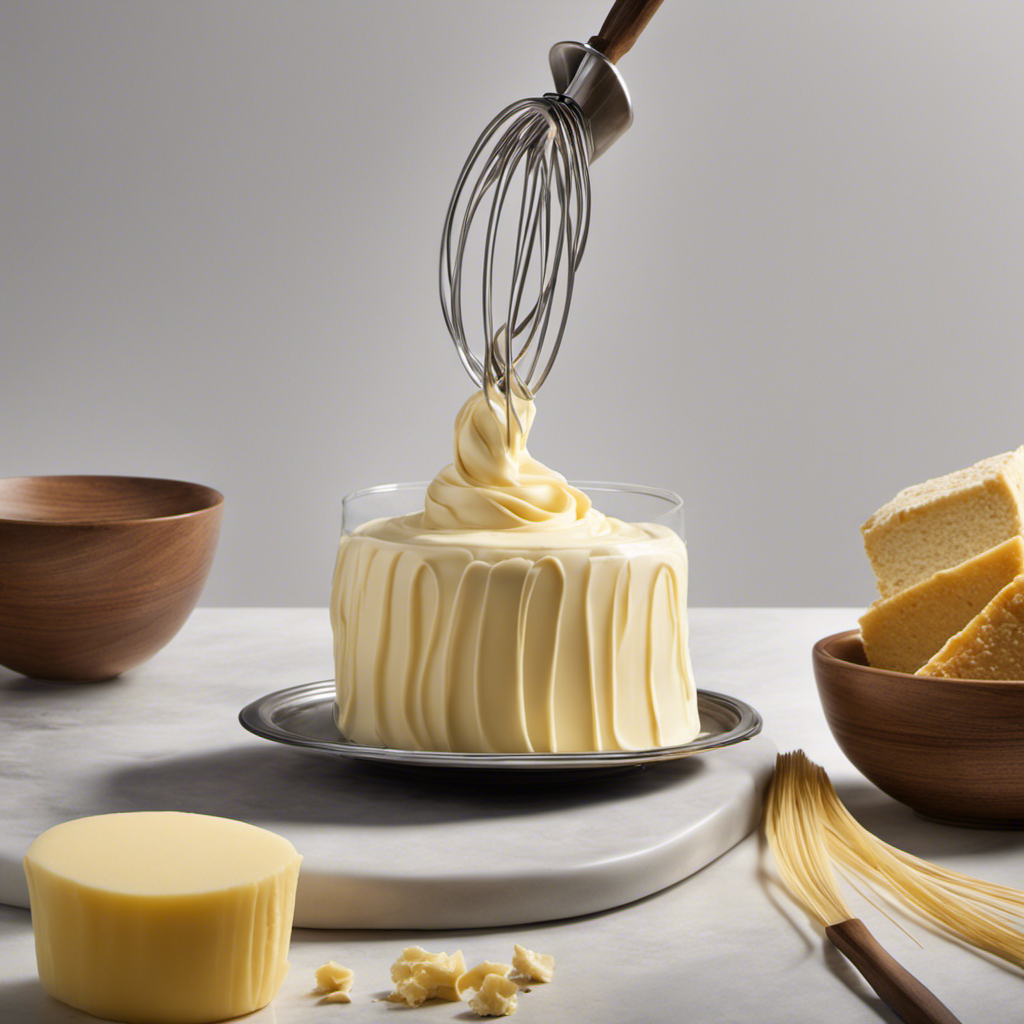Understanding butter temperatures is key for your baking success. Use cold butter when making flaky pastries, like pie crusts or croissants. For light and airy baked goods, softened butter works best; let it sit out for about 30 minutes. Melted butter is great for dense treats, such as brownies or chocolate chip cookies, as it adds moisture and flavor. Make sure your butter isn't too hot when melted to avoid cooking other ingredients. Getting these temperatures right can elevate your baking game greatly, leading to tastier and better-textured results. Discover more tips and tricks to enhance your baking skills.
Key Takeaways
- Room temperature butter is ideal for creaming, incorporating air for light and fluffy textures in baked goods.
- Cold butter is essential for flaky pastries, ensuring layers and tender textures in items like croissants and pie crusts.
- Melted butter enhances moisture and flavor in cakes, yielding a gooey texture in cookies, but should be warm, not hot.
- Use unsalted butter for precise control over salt levels in recipes, impacting taste balance significantly.
- Always chill dough to enhance flavor and texture, preventing excessive spreading in cookies and ensuring better structure.
Importance of Butter Temperature
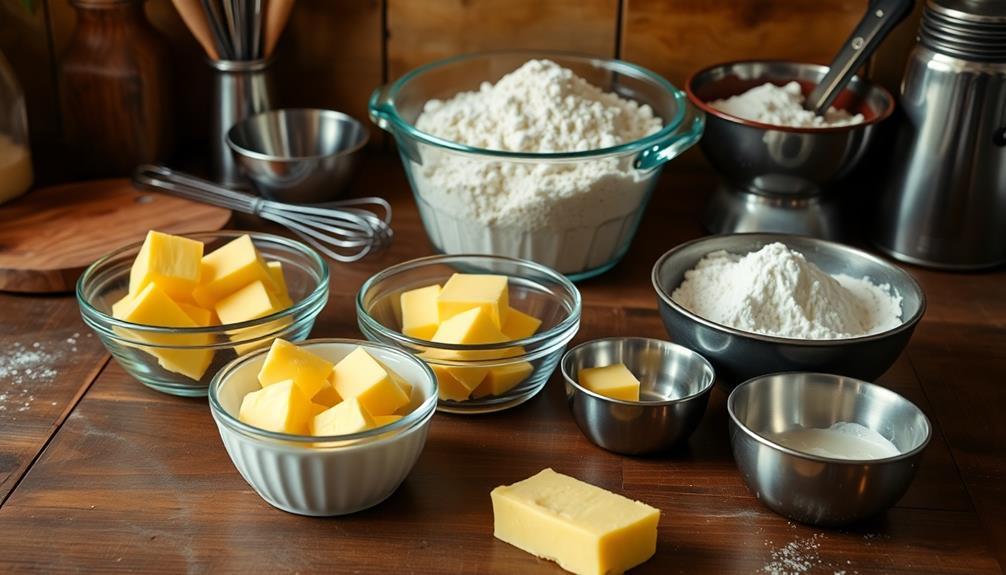
Butter temperature plays a crucial role in baking, affecting everything from texture to flavor. When you use room temperature butter, it easily incorporates air, leading to light and fluffy baked goods. This is especially important for cakes and cookies, where a creamy texture is key to the final product.
Additionally, the high fat content in butter contributes to a soft, tender crumb in baked goods, making it essential for achieving the desired results in various recipes. Culinary uses of butter further illustrate its versatility.
On the other hand, using melted butter can yield denser results. It can provide a rich, fudgy texture in brownies, but it won't give you that airy quality you might want in a sponge cake.
If you're making pastries or pie crust, cold butter is essential for achieving flakiness, as it creates pockets of steam during baking.
The precise temperature of your butter can also influence the spread of cookies. If your butter's too soft, your cookies might spread too much and become thin. Conversely, if your butter's too cold, you might end up with cookies that don't spread at all.
Cold Butter: When to Use
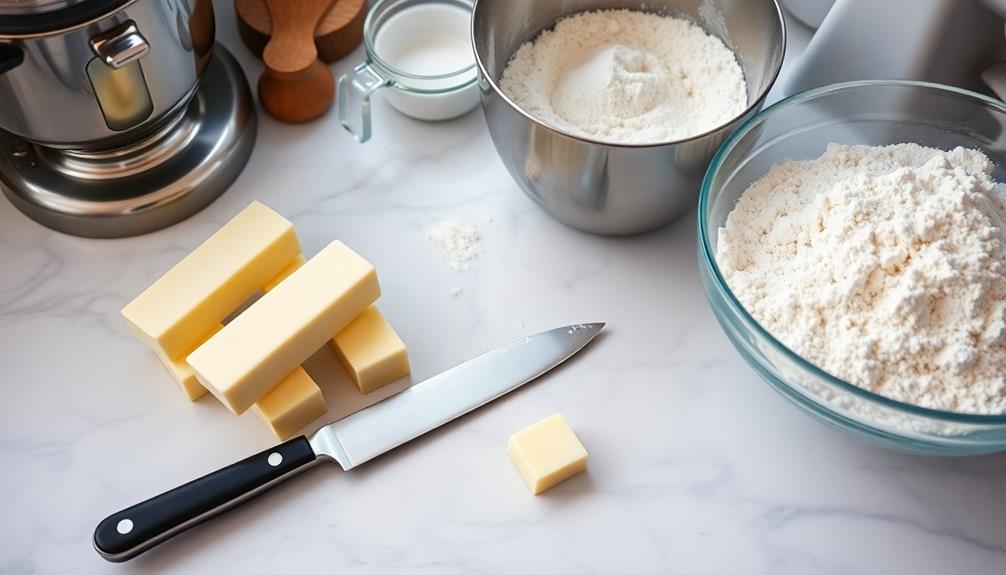
When you're making chilled dough or flaky pastries, cold butter is your best friend.
Using it helps create that tender, layered texture you love in croissants and pie crusts.
Chilled Dough Requirements
Chilled dough often requires cold butter to achieve that perfect, flaky texture in your baked goods. When you're preparing recipes like pie crusts, biscuits, or scones, using cold butter is essential. It helps create those delicious layers and prevents the dough from becoming too soft.
Here are some key points to remember when working with chilled dough:
- Temperature: Make sure your butter is straight from the fridge. If it's too soft, it won't create the desired texture.
- Cutting Technique: Use a pastry cutter or your fingers to incorporate the cold butter into the flour. This method keeps the butter cold and prevents it from melting prematurely.
- Dough Handling: Handle the dough as little as possible. The warmth from your hands can soften the butter, affecting the final product.
- Chilling Time: After mixing, chill the dough for at least 30 minutes before rolling it out. This resting period allows the butter to firm up again, enhancing the overall flakiness.
Flaky Pastry Benefits
Using cold butter is essential for achieving that desirable flaky texture in pastries. When you incorporate cold butter into your dough, it creates small pockets that expand during baking. This results in that light, airy texture you love in flaky pastries, like croissants and puff pastry.
The importance of maintaining the right temperature in baking is similar to guaranteeing proper toilet flushing mechanisms that enhance efficiency toilet flushing efficiency.
You want to keep the butter cold because the heat from your hands can melt it, which defeats the purpose. By using cold butter, you guarantee that it remains solid until it hits the oven. As the pastry bakes, the water in the butter turns to steam, creating those delightful layers that flake apart beautifully.
When making pastries, remember to cut the cold butter into small cubes and mix it into the flour quickly. This helps you maintain the butter's temperature while guaranteeing even distribution.
If you find yourself pressed for time, you can even chill your mixing bowl and utensils to further keep things cool.
Softened Butter: Key Uses
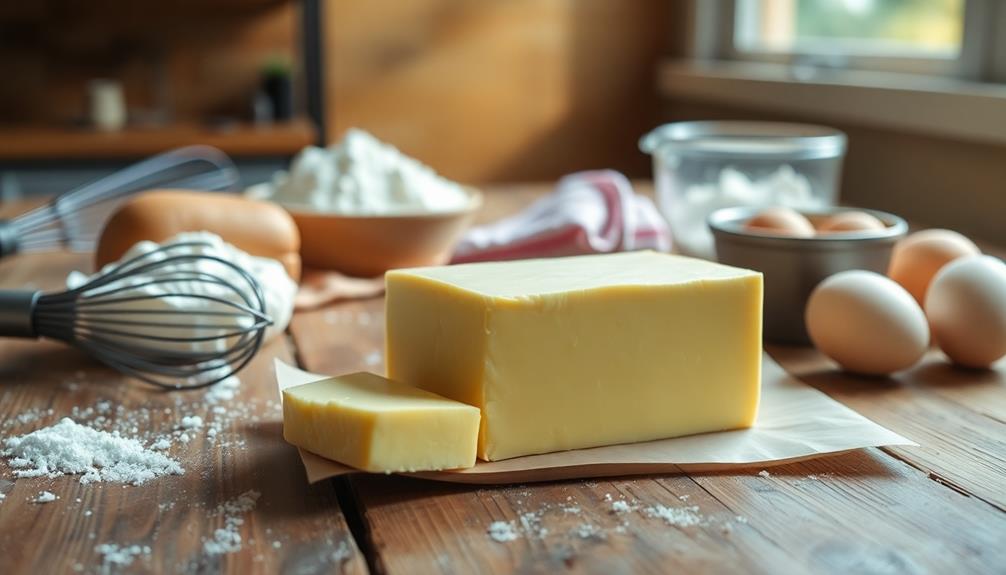
Softened butter plays an essential role in baking, acting as a key ingredient that can transform your recipes. When butter is softened to the right consistency, it's easier to incorporate into batters and doughs, ensuring a smooth texture and rich flavor.
Here are some of the key uses for softened butter:
- Creaming: You'll want to cream softened butter with sugar to create a light and airy mixture, which helps your baked goods rise beautifully.
- Incorporating Add-ins: Softened butter allows you to easily mix in ingredients like chocolate chips, nuts, or dried fruit without clumping.
- Making Frosting: It's vital for achieving a smooth, spreadable frosting. Softened butter blends seamlessly with powdered sugar and other flavorings.
- Enhancing Flavor: The rich taste of softened butter enhances the overall flavor profile of your cookies, cakes, and muffins, making them irresistibly delicious.
Using softened butter correctly can elevate your baking, so make sure to check its texture before starting your next culinary adventure!
Melted Butter: Best Applications
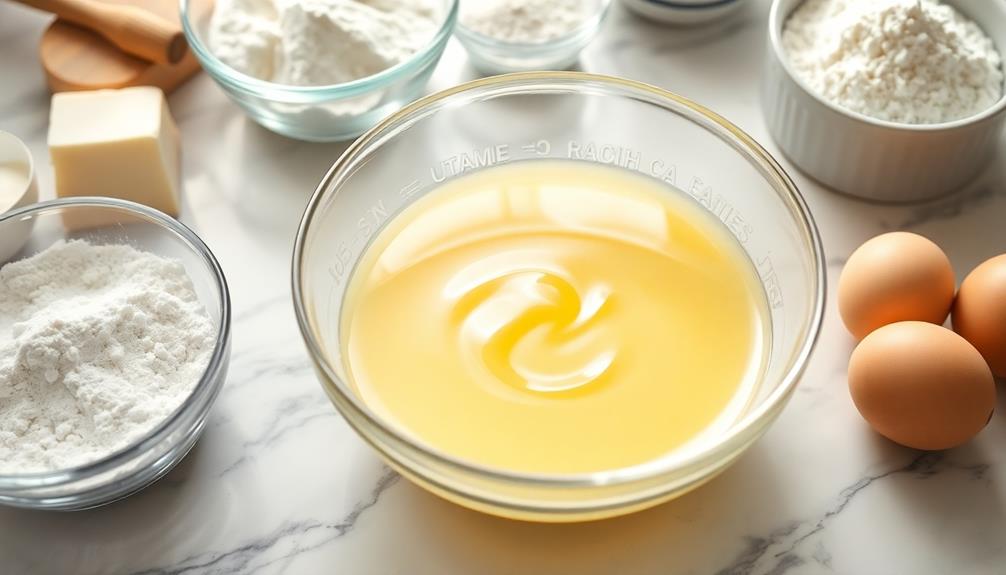
When you're using melted butter in your baking, you're not just adding flavor; you're also changing the texture.
It helps create a rich, chewy cookie dough and enhances moisture in cakes, making them tender and delicious.
Understanding how to use melted butter effectively can elevate your baked goods to the next level.
Cookie Dough Consistency
Melted butter can greatly impact cookie dough consistency, leading to delightful results in certain recipes. When you use melted butter, it creates a richer, denser dough, which can yield cookies that are chewy and flavorful.
This technique works best for specific types of cookies, so knowing when to use melted butter is key.
Here are four cookie types where melted butter shines:
- Chocolate Chip Cookies: The melted butter helps to create a gooey, soft center while ensuring the edges remain slightly crispy.
- Brown Butter Cookies: Browning the butter before melting adds a nutty flavor that elevates your cookie game.
- Peanut Butter Cookies: The melted butter integrates seamlessly with peanut butter, creating a smooth and rich texture.
- Oatmeal Cookies: Using melted butter results in a chewy, satisfying bite, allowing the oats to shine through.
Cake Moisture Enhancement
Using melted butter in cake recipes can greatly enhance moisture and flavor, much like it does in cookie dough. When you incorporate melted butter, it blends easily with sugar and eggs, creating a smooth batter that results in a tender crumb. This is especially beneficial for recipes that require a denser texture, as it helps prevent dryness.
Here are some of the best applications for using melted butter in your cake recipes:
| Application | Description |
|---|---|
| Pound Cakes | Adds richness and keeps the cake moist |
| Chocolate Cakes | Enhances chocolate flavor and moisture |
| Bundt Cakes | guarantees even moisture throughout |
| Layer Cakes | Creates a soft, fine crumb |
| Quick Breads | Improves texture while adding flavor |
How to Achieve Perfect Butter
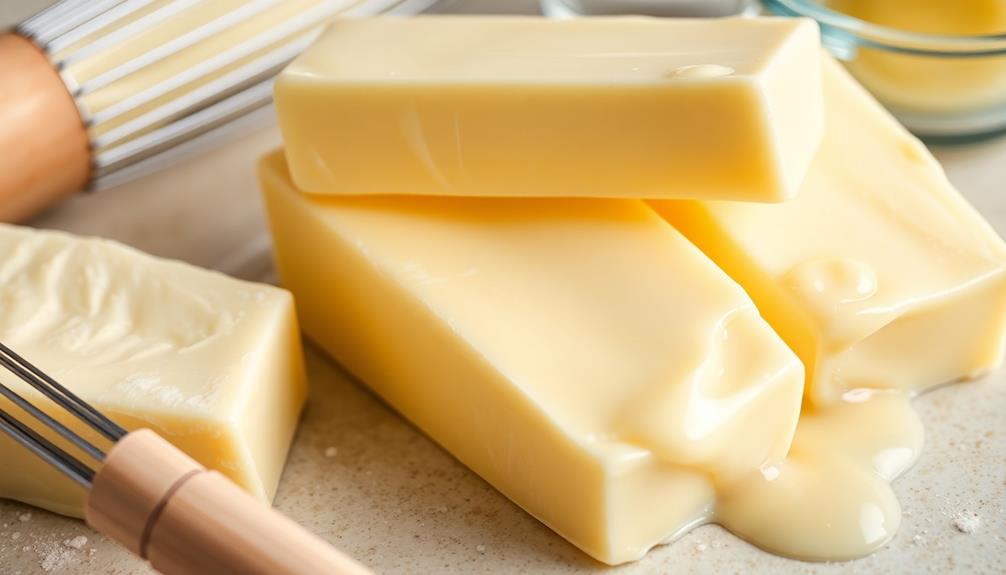
Achieving perfect butter is essential for elevating your baking results. The temperature and texture of butter can drastically affect the outcome of your recipes. To guarantee you're using butter at its best, follow these simple tips:
1. Room Temperature: For most baking needs, let your butter sit out for about 30 minutes to an hour. It should be soft enough to leave a slight indent when pressed but still hold its shape.
Using European butter can enhance the flavor due to its higher fat content and creamy texture.
2. Cold Butter for Pastries: If you're making pastries or pie crusts, use cold butter straight from the fridge. This helps create a flaky texture as the butter melts during baking.
3. Melted Butter: For recipes like brownies or some cookies, melted butter works wonders. Just make sure it's not too hot, as that can cook your eggs if they're added in afterward.
4. Clarified Butter: For a richer flavor, consider using clarified butter. It has a higher smoke point and adds a nutty taste, perfect for certain baked goods.
Common Baking Mistakes to Avoid
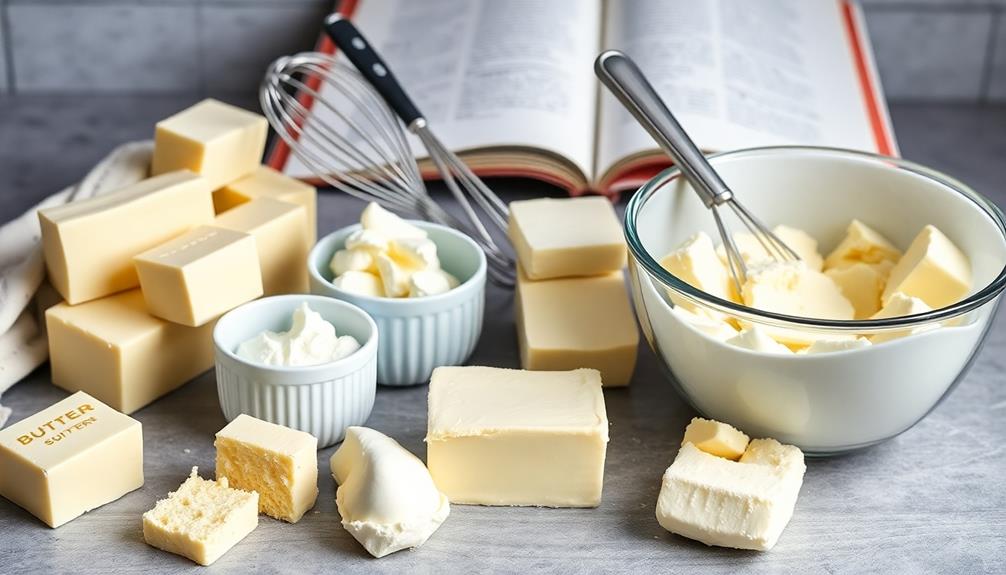
Even with the right butter temperature, mistakes can still derail your baking efforts. One common error isn't measuring ingredients properly. Use a kitchen scale or measuring cups and spoons to guarantee accuracy.
Another mistake is skipping the creaming step when mixing butter and sugar. This process incorporates air, creating a light texture in your baked goods.
Overmixing your batter is another pitfall. Once you've combined the wet and dry ingredients, mix just until they come together. Overmixing can lead to dense, chewy results instead of the desired lightness.
Also, don't forget to check your oven temperature. An oven thermometer can help you verify that it's accurate; baking at the wrong temperature can ruin your recipe.
Frequently Asked Questions
Can I Use Margarine Instead of Butter?
Sure, you can use margarine instead of butter in many recipes. Just remember, margarine has a different flavor and fat content, which might slightly alter the texture and taste of your final dish. Experiment and enjoy!
How Does Butter Temperature Affect Cookie Texture?
Imagine baking a cake. If it's too hot, it collapses. Similarly, butter temperature affects cookie texture; cold butter yields chewy cookies, while softened creates a tender, melt-in-your-mouth delight. Choose wisely for your perfect batch!
What Happens if I Use Too Cold Butter?
If you use too cold butter, your cookies won't spread properly. They'll end up dense and cakey instead of chewy. It's essential to let butter soften for the best texture and flavor in your baked goods.
Can I Refrigerate Softened Butter for Later Use?
Yes, you can refrigerate softened butter for later use. Just make sure to wrap it tightly to prevent it from absorbing odors. When you're ready, let it sit at room temperature before using it again.
How Can I Quickly Soften Butter Without Melting It?
If you're in a pinch, try grating the cold butter with a box grater. It'll soften quickly as you work it into your recipe. Alternatively, cut it into small cubes for faster results.
Conclusion
In baking, using the right butter temperature is essential for achieving perfect results. Did you know that about 90% of bakers say the texture of their cookies improved when they used softened butter instead of cold? By mastering when to use cold, softened, or melted butter, you can elevate your baked goods from good to great. So, next time you're in the kitchen, remember these tips to avoid common mistakes and create delicious treats!
